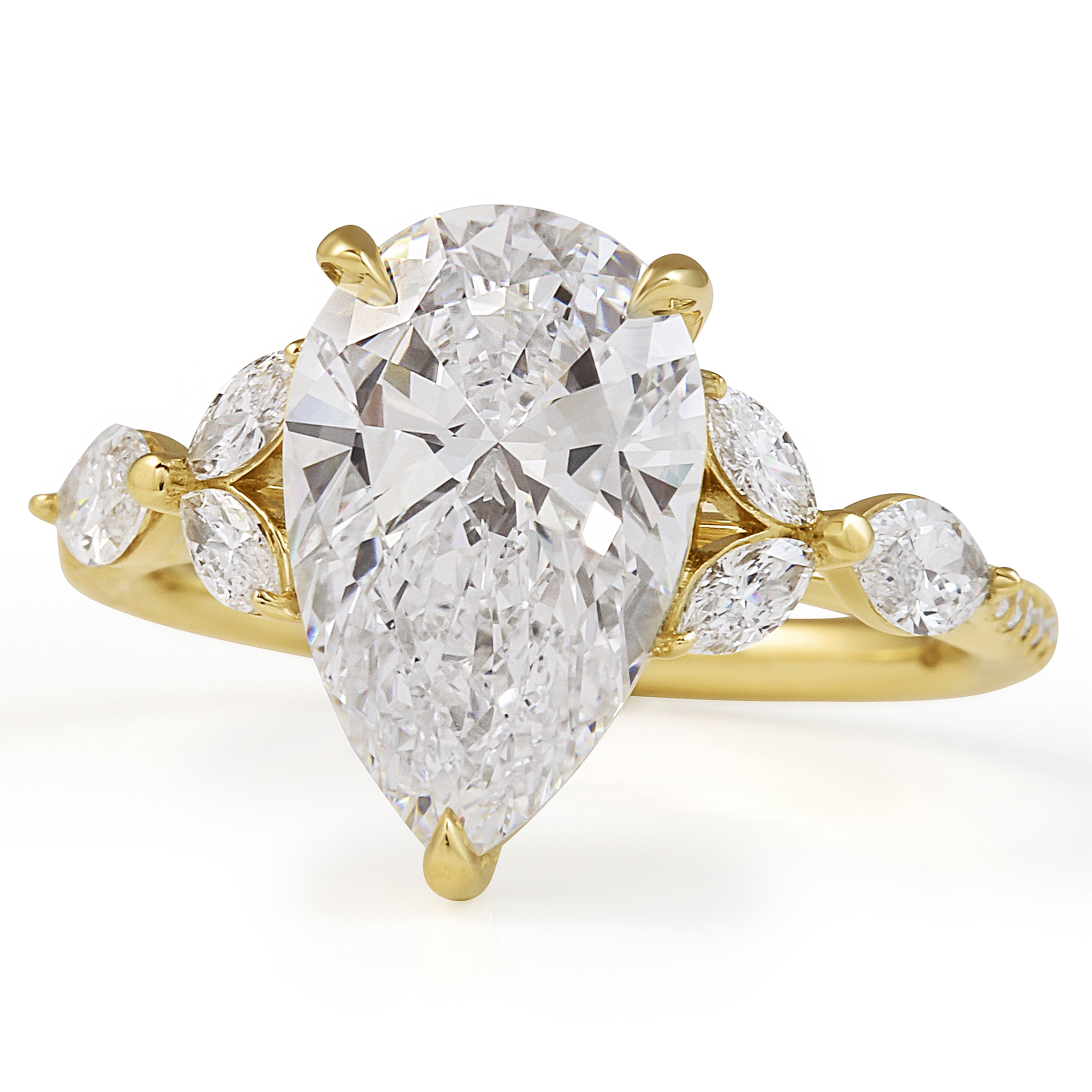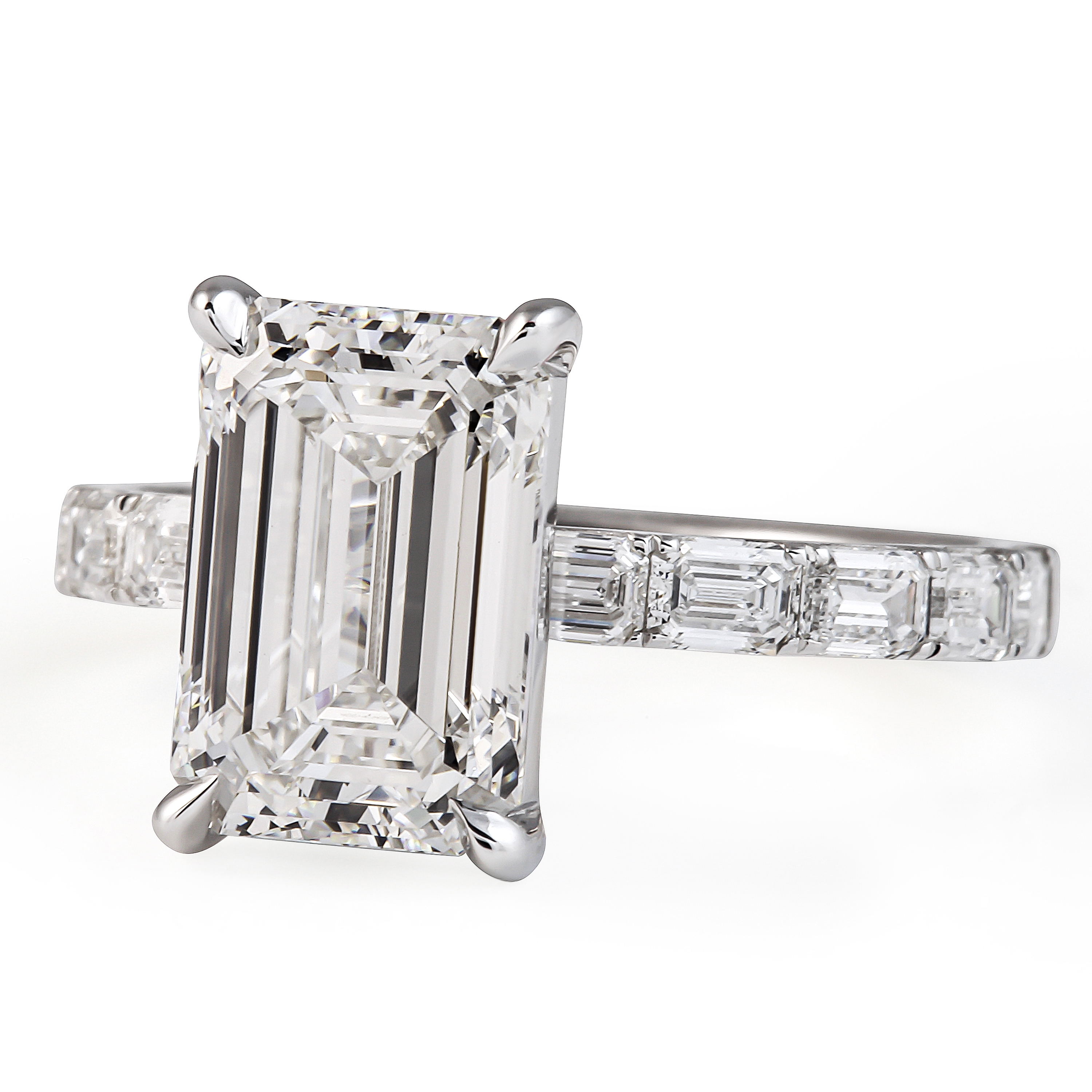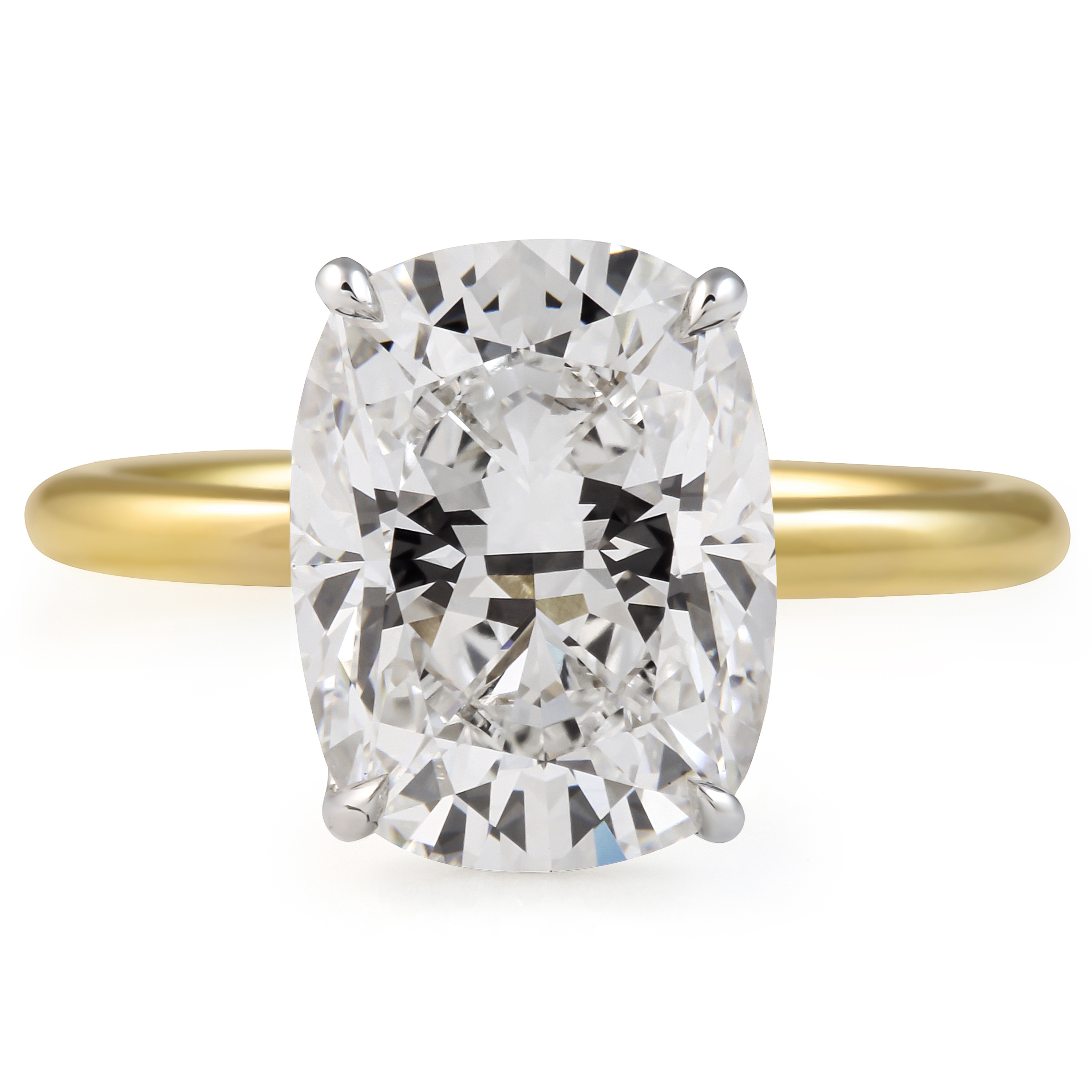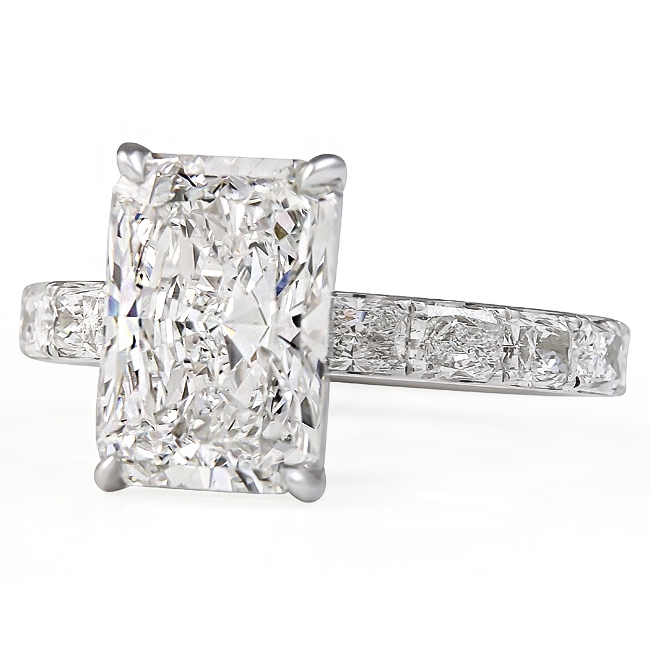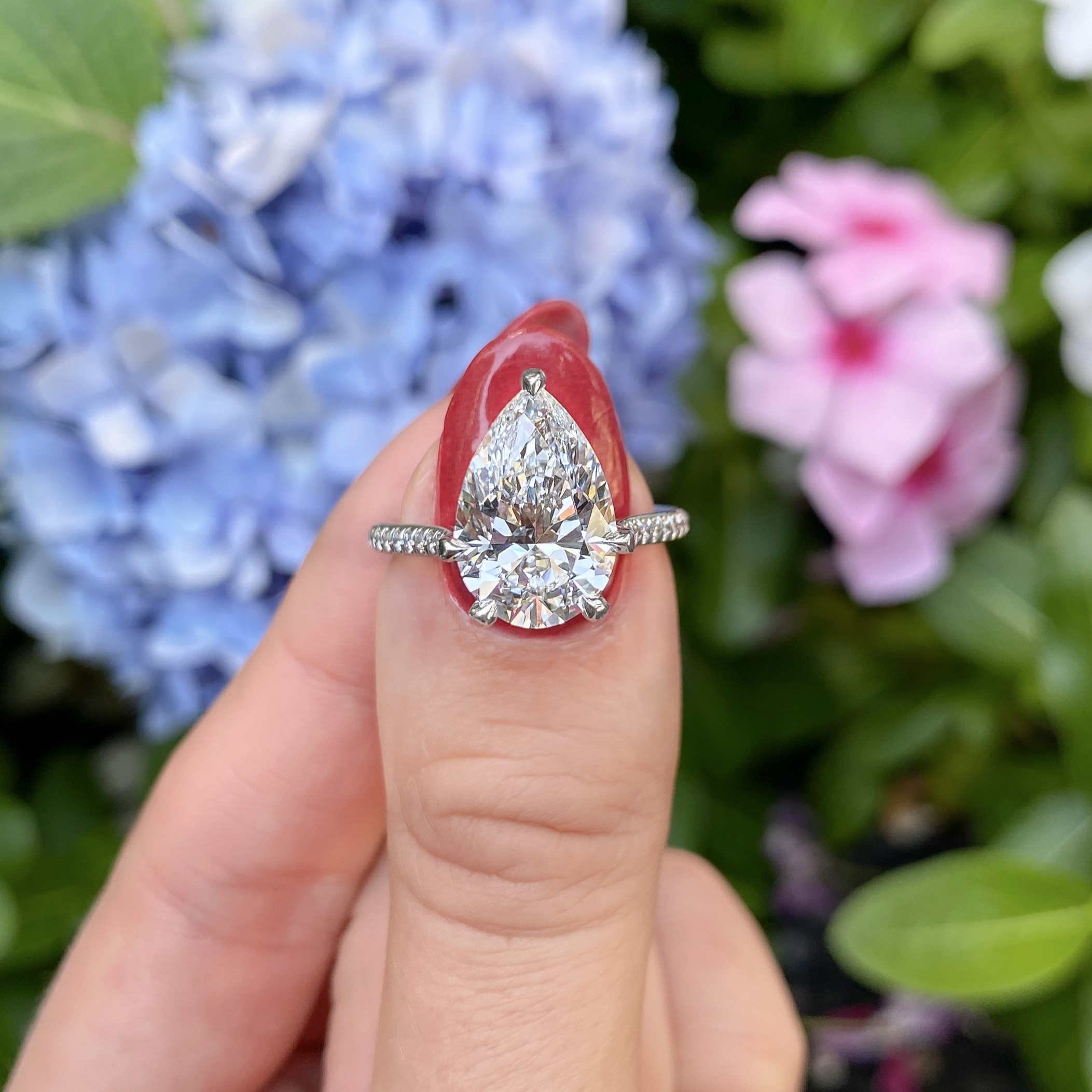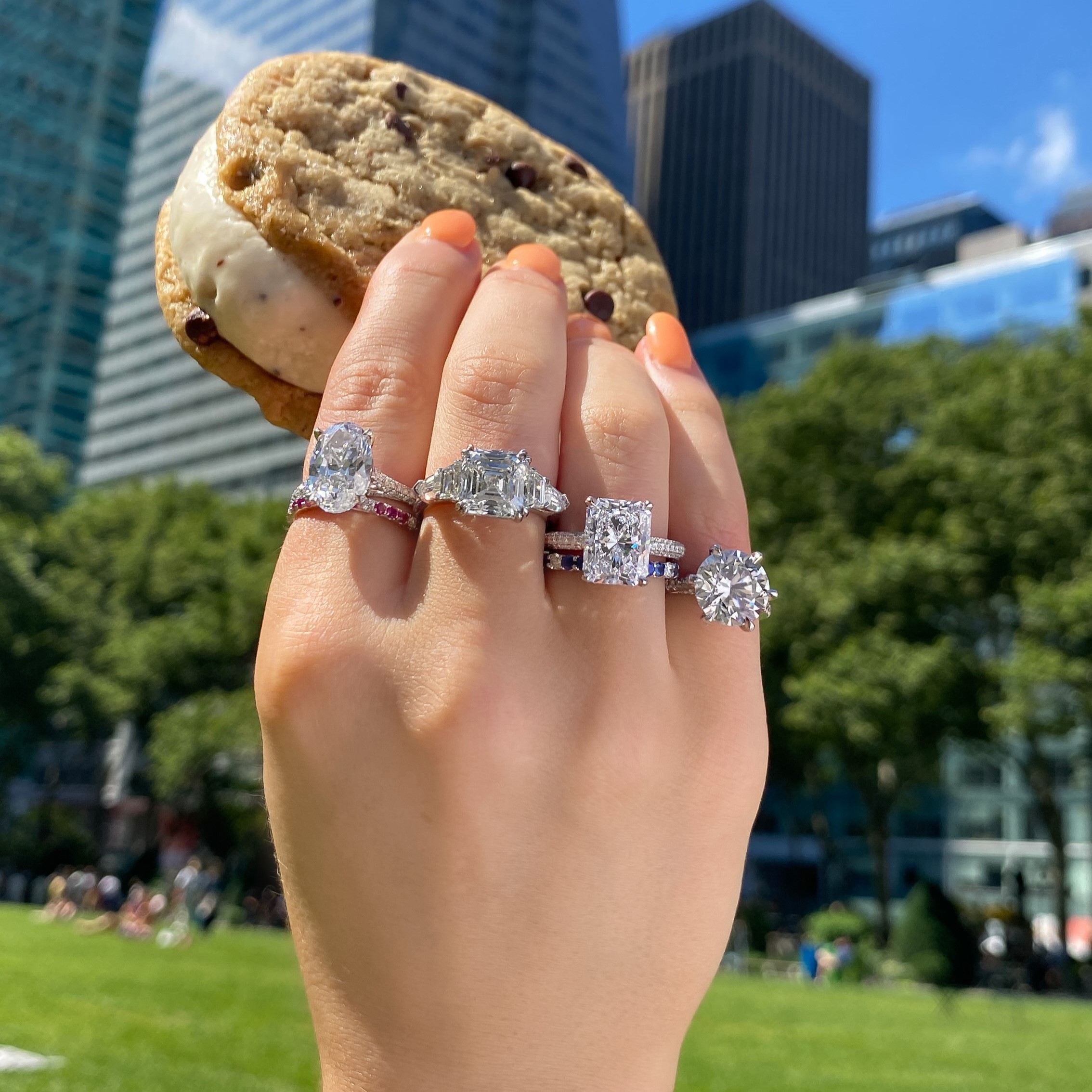Lab-Grown Diamond Engagement Rings
Lab-grown diamonds have the exact same chemical make-up and appearance as a natural, mined diamond. What’s the difference? One was made in a lab and one was made in the Earth’s crust.
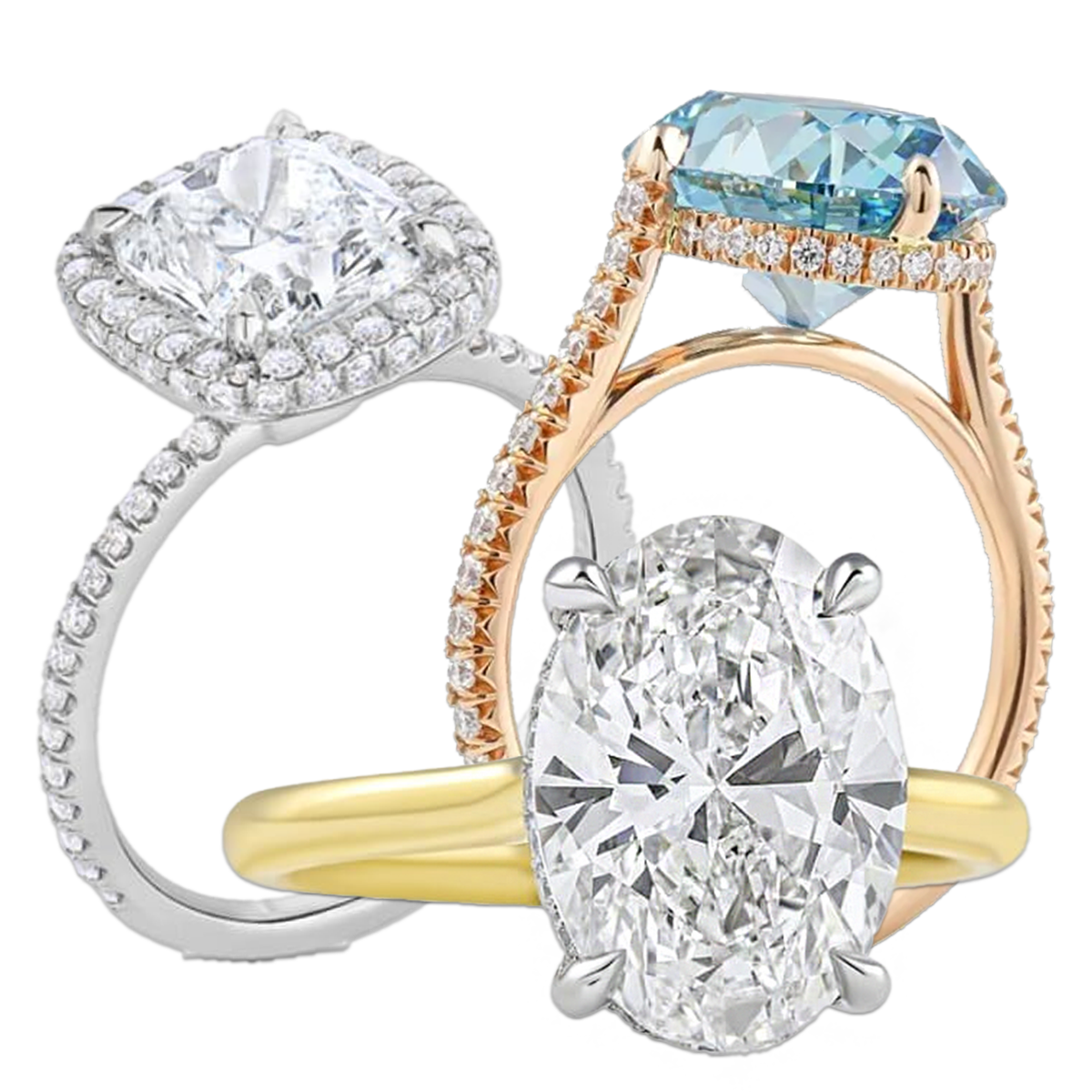

View Some our Favorite Lab-Grown Diamond Engagement Rings
Meet with us in-store at our New York City showroom or shop with us remotely to see more Lab-Grown Diamond Engagement Rings.
- In-Store
- Virtual
Frequently Asked Questions
How is a round lab-grown diamond created?
There are two methods to create lab diamonds: High Pressure High Temperature (HPHT) and Chemical Vapor Deposition (CVD).
HPHT was the first major method for creating lab-grown diamonds. It mimics the natural process of diamond formation in the span of a several weeks as opposed to several billion years. A diamond seed is placed into a special press with carbon. The area is until it reaches a temperature of around 1600 degrees Celsius, or about 2900 Fahrenheit. The chamber exerts pressure up to and over 870,000 pounds per square inch. Molten metal (typically from a source like graphite) in the chamber then dissolves the carbon source, and a diamond begins to form and build around the diamond seed.
In CVD, a diamond seed is placed into a sealed vacuum chamber. After the chamber fills with carbon-heavy gas, like methane, it’s heated to a high temperature of around 1500 degrees Fahrenheit. The high temperatures convert the gas into plasma, which releases pieces of carbon. Those carbon pieces build upon the diamond seed originally placed in the chamber. Eventually, a full diamond forms after layer and layer of carbon pieces attach to the seed. The whole process produces incredible, chemically-pure diamonds free of most impurities. They don’t contain metal inclusions, either.
You can read more about HPHT and CVD in our blog, An In-Depth Look at CVD vs. HPHT.
What’s the difference between lab-grown diamond engagement rings vs natural diamonds?
Natural diamonds form over millions of years under pressure from the Earth’s crust, and are mined, cut, and polished to produce the brilliant stones you find in jewelry. Lab-grown diamonds undergo the same process, only instead of millions of years, they form in a few weeks via a high temperature or a chemical vapor process. The difference between a natural and lab-grown diamond is indistinguishable to the naked eye. They have the same chemical and physical attributes, but specially trained gemologists may be able to use a magnifying tool to indicate growth patterns or the presence of elements that would help distinguish one from the other. However, the most trusted method is to use a testing machine. Both types can have inclusions, or tiny flaws, but have identical hardness.
Are lab-grown diamonds as durable as natural ones?
Natural and lab created diamonds have the exact same chemical composition. Because of this, lab diamonds are also just as durable as natural diamonds meaning they are the hardest, most durable gemstone on the Mohs scale.
Are lab-grown diamonds GIA-certified?
Not all lab-grown diamonds are GIA certified. However, all lab-grown diamonds at Lauren B are GIA certified! Browse our inventory of GIA Graded lab diamonds.
Do lab-grown diamonds have inclusions?
Contrary to popular belief, lab diamonds are not flawless: they can have inclusions too! For both HPHT and CVD diamonds, there are outside elements used as catalysts to help grow the diamond. During this process, any of the catalysts can become trapped within the diamond's structure and become inclusions.
What is the best cut for a lab-grown diamond?
Lab-grown diamonds have the same chemical composition and visual quality as natural diamonds. Natural diamonds, however, form over billions of years by the extreme heat and pressure hundreds of miles below the earth’s surface. Lab-grown diamonds form over a few weeks in a controlled environment. Lab-grown diamonds are available in the same round and fancy shapes (pear, marquise, emerald, Asscher, heart, oval, cushion, etc.) as natural diamonds. All cuts look similar on a lab-grown diamond as on a natural diamond. There are no restrictions regarding the ring design.
Learn More Here:



